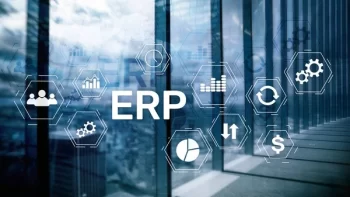
Attributed by Vincent Tang, Vice President, Asia of Epicor
Enterprise Resource Planning (ERP) systems of today have evolved significantly from their early hardware-based iterations. Growing from just a record-keeping tool, modern ERPs now gather and analyse data from across an organisation to deliver valuable insights, facilitate collaboration via intuitive dashboards, and empower flexible working arrangements.
These benefits position ERP systems as catalysts for scaling operations, broadening the customer base, and increasing revenue. Capitalising on this potential, however, hinges on a keen understanding of how ERP systems can be leveraged to navigate changing conditions. Here are five industry trends to keep an eye out for:
- Growing cloud adoption
Public cloud spending is on the rise in the Asia-Pacific. IDC, for example, projects this figure to reach a whopping $219.3 billion by 2027.
In the face of growing demand for agile cybersecurity, data analytics, and AI technologies, organisations’ cloud budgets should factor in how cloud-based ERPs contribute to achieving these key objectives.
Historically, on-premises ERP hardware struggled with limited storage and bulky physical assets requiring constant specialised maintenance. Today, cloud environments enable organisations to operate efficiently from anywhere, allowing for quicker and easier scaling. ERP solutions are taking the same route, with cloud-based ERP systems empowering organisations to store vast amounts of data and extract valuable insights to inform operational improvements.
Additionally, cloud-based ERP systems provide employees with access to pertinent data and insights regardless of their location, supporting flexibility across the globe.
- Rising IoT usage
According to Transforma Insights and Statista, the number of IoT devices used across industries will triple by 2030 to over 29 billion devices.
More IoT devices means more opportunities to gather more data to inform operational efficiency, energy usage, process speeds, downtime, and shipping information.
This heightened visibility can better inform strategic planning, optimise productivity, and boost efficiency. For ERPs, this translated to the ability to gather, collate, and analyse data from across the enterprise network, enhancing decision-making on operational processes.
Which is why 32% of respondents in Epicor’s 2024 Agility Index said they were optimistic about automation increasing efficiency and productivity. Meanwhile, 26% said they were excited about cost savings, and a further 23% earmarked improving supply chain agility as the benefit they most looked forward to. With the potential of artificial intelligence (AI) and machine learning (ML), these benefits can be further accelerated.
- Growing need for insights
But more data alone isn’t enough. To become truly data driven, it is essential to study various processes — such as machine efficiency, delivery times, workflows, talent deployment, and throughputs—to identify strengths, weaknesses, gaps and potential improvements. This is ultimately the key to pinpointing areas for enhancement.
Given that ERP systems are already collecting large amounts of data, it’s high time that organisations harness an ERP solution that facilitates business intelligence and analytics through an intuitive dashboard that provides clear visual representations of data.
The tangible benefits of this approach were highlighted in a recent Epicor, which found that, despite factory workers citing rising raw material costs as their top challenge, detailed operational insights provided by a robust ERP system opened avenues to rationalise expenditures.
- Increased focus on user experience
In an era where people are increasingly familiar with screens—from smartphones to self-service kiosks—ERP systems are evolving in design, functionality, and usability. By tapping into users’ familiarity with such interfaces, ERP systems become easier to use, driving adoption, and leading to significant savings in time and money, as well as increased productivity, as staff spend less time navigating complicated interfaces.
We can also expect ERP systems to continue exploring ways to speed up and aid adoption. After all, modern ERP systems already offer customisation options, allowing workers to tailor business applications to their specific needs—for instance, customising workflows, modelling, or building an analytics dashboard to their exact specifications.
- A connected workforce
The topic of work flexibility is now integral to the world of employment. Ensuring cohesion rests on fostering collaboration across multiple physical locations.
ERP systems can be a major boon in this regard. With their ability to hold operational data and insights, ERP systems can connect stakeholders across the organisation, providing each one with a comprehensive view of business operations. Modern ERP systems also come with social tools, enabling workers from different locations to interact and collaborate effectively.
Given its current trajectory, ERP systems are poised to cement themselves as an essential. Staying competitive, therefore, hinges on understanding ensuring these systems are well-equipped to give enterprises an edge. Only by leveraging robust ERP solutions can businesses thrive in our digital-first world, both now and in the future.
 (0)
(0) (0)
(0)Archive
- October 2024(44)
- September 2024(94)
- August 2024(100)
- July 2024(99)
- June 2024(126)
- May 2024(155)
- April 2024(123)
- March 2024(112)
- February 2024(109)
- January 2024(95)
- December 2023(56)
- November 2023(86)
- October 2023(97)
- September 2023(89)
- August 2023(101)
- July 2023(104)
- June 2023(113)
- May 2023(103)
- April 2023(93)
- March 2023(129)
- February 2023(77)
- January 2023(91)
- December 2022(90)
- November 2022(125)
- October 2022(117)
- September 2022(137)
- August 2022(119)
- July 2022(99)
- June 2022(128)
- May 2022(112)
- April 2022(108)
- March 2022(121)
- February 2022(93)
- January 2022(110)
- December 2021(92)
- November 2021(107)
- October 2021(101)
- September 2021(81)
- August 2021(74)
- July 2021(78)
- June 2021(92)
- May 2021(67)
- April 2021(79)
- March 2021(79)
- February 2021(58)
- January 2021(55)
- December 2020(56)
- November 2020(59)
- October 2020(78)
- September 2020(72)
- August 2020(64)
- July 2020(71)
- June 2020(74)
- May 2020(50)
- April 2020(71)
- March 2020(71)
- February 2020(58)
- January 2020(62)
- December 2019(57)
- November 2019(64)
- October 2019(25)
- September 2019(24)
- August 2019(14)
- July 2019(23)
- June 2019(54)
- May 2019(82)
- April 2019(76)
- March 2019(71)
- February 2019(67)
- January 2019(75)
- December 2018(44)
- November 2018(47)
- October 2018(74)
- September 2018(54)
- August 2018(61)
- July 2018(72)
- June 2018(62)
- May 2018(62)
- April 2018(73)
- March 2018(76)
- February 2018(8)
- January 2018(7)
- December 2017(6)
- November 2017(8)
- October 2017(3)
- September 2017(4)
- August 2017(4)
- July 2017(2)
- June 2017(5)
- May 2017(6)
- April 2017(11)
- March 2017(8)
- February 2017(16)
- January 2017(10)
- December 2016(12)
- November 2016(20)
- October 2016(7)
- September 2016(102)
- August 2016(168)
- July 2016(141)
- June 2016(149)
- May 2016(117)
- April 2016(59)
- March 2016(85)
- February 2016(153)
- December 2015(150)

